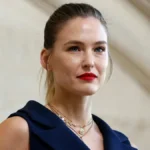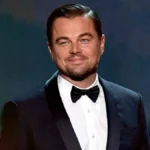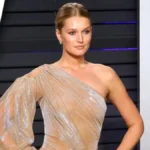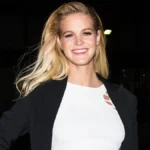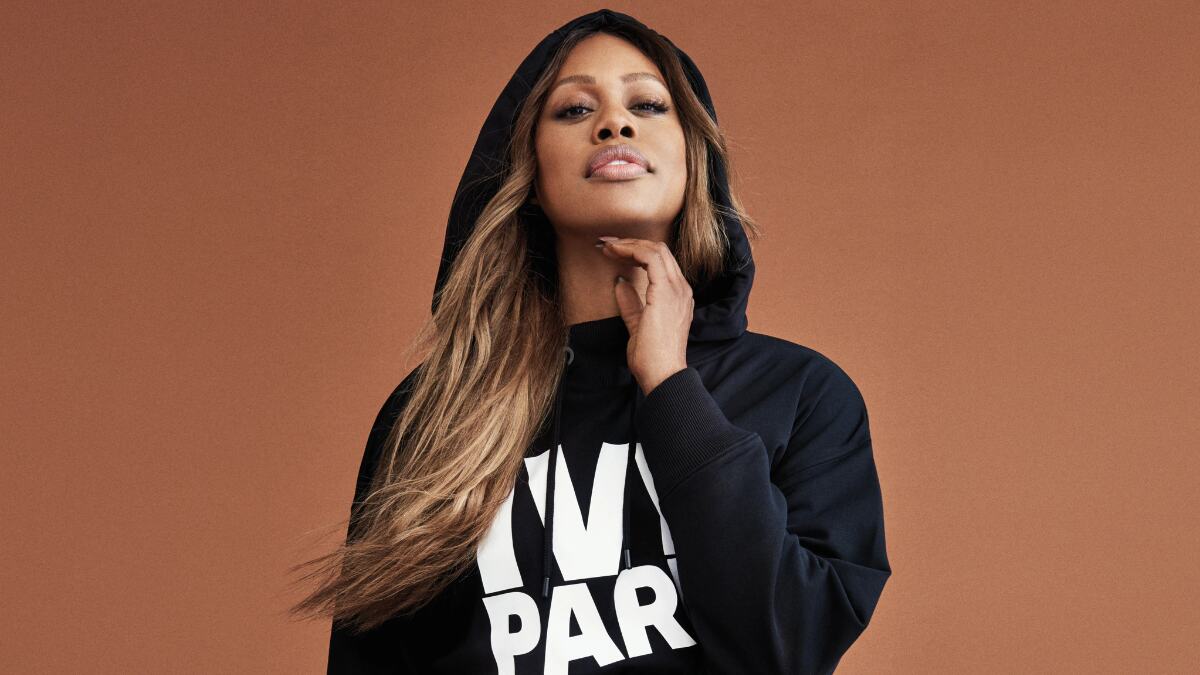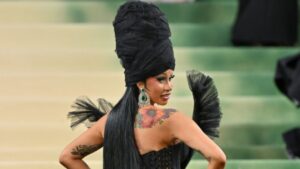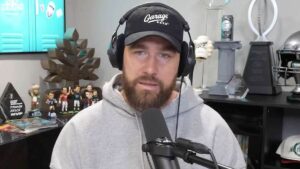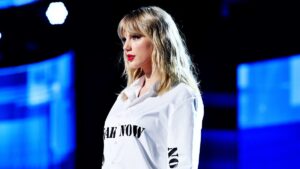The house lights dim, the bass drops, and a sea of sequins and silver glitters under the Renaissance tour stage lights. For most fans, that’s where Beyoncé’s story begins and ends — a performer at the absolute peak of her powers. But step behind the curtain, and you’ll see something else: the machinery of a global entrepreneur who has spent two decades turning artistry into empire.
Beyoncé isn’t only commanding stadiums; she’s orchestrating boardrooms. From early battles to owning her masters, to creating Parkwood Entertainment as a vehicle for creative and financial independence, her path has always been about more than music. In the world of fashion, her Ivy Park line redefined athleisure with bold, limited-edition drops that sparked cultural frenzies and global sellouts. Her carefully curated brand partnerships, from Pepsi to Tiffany & Co., prove she doesn’t simply endorse — she aligns, extending influence into new markets while maintaining total control of her image.
This is where Beyoncé’s brand strategy becomes something bigger than celebrity marketing. It’s cultural architecture, built with the precision of a businesswoman who understands both art and commerce. In this article, we’ll explore how Beyoncé, the entrepreneur, constructed Ivy Park, Parkwood Entertainment, and a brand that now stretches far beyond the stage.
How Did Beyoncé Start Building a Business Beyond Music?
Long before Ivy Park or Parkwood Entertainment, Beyoncé was already laying the foundation of her business empire. Her earliest lessons came during the Destiny’s Child era, when she began to understand the value of publishing rights and the power dynamics of the music industry. By the time she launched her solo career in the early 2000s, she was determined to shape her path on her own terms.
One major turning point came when she parted ways with her father as manager in 2011. The move was risky — walking away from the person who had built her early career — but it gave her full management independence. From there, she tightened control over her projects, even negotiating ownership of her master’s. In interviews, she’s spoken about this drive plainly: “Ownership is the ultimate power. You can’t put a price on your freedom.”
These early steps may not have looked glamorous, but they were crucial. They marked the beginning of Beyoncé’s entrepreneurship and her refusal to be just another artist in the industry machine. Before the world saw Ivy Park’s neon campaigns or Parkwood’s groundbreaking visuals, the blueprint was already in motion — a model of artist ownership and music industry control that other stars would later follow.
What Is Parkwood Entertainment and Why Did Beyoncé Create It?
When people search Parkwood Entertainment explained, they’re often surprised to learn it isn’t just a vanity label — it’s the backbone of Beyoncé’s empire. Founded in 2008 and named after a street in her Houston hometown, Parkwood began as a small production outfit but quickly grew into the engine that powers nearly every aspect of her career.
Why did Beyoncé need it? The answer is simple: creative control. In an industry where artists often surrender rights and vision to record labels, Parkwood gave her autonomy over music, visuals, and branding. It allowed her to own the process end-to-end, from producing the Lemonade visual album that reshaped storytelling in pop, to Homecoming, her Emmy-winning Coachella documentary, and the Disney+ film Black Is King. Variety once noted that Beyoncé “functions less like an artist under contract and more like a studio head” — a striking contrast to the limitations most artists face.
This model diverges sharply from standard label deals, where executives often dictate artistic direction. With Parkwood, Beyoncé became both performer and producer, both brand and business. In short, Beyoncé’s production company redefined what it means for a pop star to take the reins and set a precedent for the next generation of artist-entrepreneurs.
How Ivy Park Became a Global Athleisure Brand
The Ivy Park brand story reads more like a cultural movement than a clothing line launch. When Beyoncé announced the first collection, fans treated it less like a retail event and more like a concert ticket drop. Instagram lit up with images of neon orange boxes hand-delivered to celebrities, each one teasing the Adidas collaboration that would soon flood timelines worldwide. Within hours of going live, pieces sold out — sneakers, bodysuits, and tracksuits disappearing as fast as tickets to a tour.
At its core, Ivy Park was about more than fashion. It was Beyoncé’s vision of athleisure that reflected power, inclusivity, and cultural swagger. The Beyoncé Adidas collaboration brought the brand global reach, tapping into Adidas’ distribution while Beyoncé supplied the storytelling. Together, they pioneered a scarcity-marketing model: limited drops that turned gym wear into collectibles. Analysts estimated that early capsules generated tens of millions in sales, but the bigger story was cultural capital. When Reese Witherspoon or Cardi B posted their Ivy Park boxes, it wasn’t just a product — it was a flex.
What set Ivy Park apart was how it blurred worlds. It wasn’t only sportswear; it was pop culture in fabric form, merging music, fashion, and fandom. In the crowded athleisure market dominated by Nike and Puma, Ivy Park carved a lane defined not by logos, but by Beyoncé’s brand of cultural authority.
Why Did Beyoncé Choose Adidas for Ivy Park?
When Beyoncé relaunched Ivy Park in 2019, she didn’t just want a retailer — she wanted a global stage. Adidas wasn’t just another sportswear brand; it was the megaphone she needed. With its deep roots in lifestyle credibility and a distribution network spanning over 100 countries, Adidas offered the kind of reach no boutique brand could match.
Industry analysts at Business of Fashion noted that Adidas was eager to diversify beyond performance sneakers into athleisure expansion, and Beyoncé gave them exactly that — cultural cachet and storytelling. In return, she secured the infrastructure to move Ivy Park from a niche label to a worldwide phenomenon.
The partnership also aligned with Adidas’ push to position itself as a brand that fused sport and culture, much like its deals with Kanye West’s Yeezy or Pharrell Williams. For Beyoncé, it wasn’t simply a contract — it was a strategic alignment of vision and scale.
Why Did Ivy Park End Its Partnership With Adidas?
By 2023, headlines shifted from hype to hard numbers. Reports surfaced that Ivy Park’s sales had fallen well below projections — the Wall Street Journal cited an estimated $40 million in revenue, compared to the $200 million Adidas had forecast. On paper, it looked like a miss. But the Ivy Park Adidas split wasn’t just about sales performance. It was about vision.
Beyoncé had always seen Ivy Park as more than apparel — a cultural statement about inclusivity, strength, and individuality. Adidas, meanwhile, was under pressure to chase mass-market success. That mismatch led to creative tensions and eventually, a quiet decision to part ways.
As one insider put it, “The split wasn’t about Beyoncé leaving fashion. It was about finding the right home for her brand.” In the end, Ivy Park proved it wasn’t built to fit into just any corporate box — even one as big as Adidas.
How Much Is Beyoncé’s Business Empire Worth in 2025?
So, how much is Beyoncé worth in 2025? According to Forbes, her net worth hovers around $780 million, depending on how her equity stakes and partnerships are valued. While she isn’t yet ahead of Jay-Z’s reported $2.5 billion fortune, her diversified empire cements her status among the world’s top cultural moguls.
Her wealth doesn’t come from one stream but from a carefully layered portfolio:
| Revenue Stream | Estimated Contribution (2025) |
| Tours & Live Performances | $200M+ (Renaissance World Tour grossed $579M) |
| Parkwood Entertainment | $100M+ (music, film, production rights) |
| Ivy Park | $40–60M annually (post-Adidas pivot still evolving) |
| Endorsements/Partnerships | $50–100M (Pepsi, Tiffany & Co., Netflix deal) |
| Real Estate & Investments | $100M+ (Bel Air estate, art holdings, other assets) |
In Beyoncé’s world, even a single tour can gross more than some startups raise in venture capital. That ability to blend artistry with commercial power is what keeps her at the center of wealth conversations.
How much does Beyoncé make from Ivy Park and Parkwood? Together, those two ventures contribute an estimated $150–200 million to her overall fortune, underscoring how essential her entrepreneurial ventures have become alongside music.
What Makes Beyoncé’s Business Model Different From Other Celebrities?
When it comes to the celebrity brand strategy playbook, Beyoncé has always chosen the path of less noise, more control. Unlike Rihanna, who turned Fenty Beauty into a mass-market juggernaut, or Kim Kardashian, who used relentless digital marketing to make SKIMS a billion-dollar shapewear empire, Beyoncé’s approach is quieter — but no less powerful.
Her strategy leans on scarcity and precision. Instead of flooding shelves, she launches limited Ivy Park drops. Instead of overextending into dozens of product categories, she focuses on ventures that reinforce her artistic and cultural narrative. Jay-Z with Roc Nation built a full-service entertainment agency; Beyoncé with Parkwood built a creative production powerhouse. Each Carter, in their own way, carved out empires rooted in ownership.
Here’s a snapshot comparison:
| Celebrity | Core Brand Model | Approach |
| Beyoncé | Parkwood, Ivy Park | Selective, high-control, scarcity-driven |
| Rihanna | Fenty Beauty, Savage X | Mass appeal, inclusivity, global retail |
| Kim Kardashian | SKIMS | Digital-first, direct-to-consumer, influencer-heavy |
| Jay-Z | Roc Nation, Armand de Brignac | Broad ownership, cultural brokerage |
Personally, I think Beyoncé’s quiet selectivity may be her boldest strategy. In an era of constant noise, her restraint has become her loudest signal.
Does Beyoncé’s Philanthropy Align With Her Business Empire?
Beyoncé’s empire isn’t only built on music, fashion, and film — it also rests on a foundation of giving. Through her BeyGOOD initiative, philanthropy has become a parallel thread to her business persona. Scholarships for young students, housing aid for families after Hurricane Harvey, and COVID-19 relief grants for small Black-owned businesses all highlight her commitment to community impact.
What makes this different from standard celebrity charity work is its integration with her brand values. Beyoncé’s philanthropy mirrors the same precision as her business ventures: targeted, intentional, and tied to empowerment. A Forbes feature once noted that “Beyoncé uses BeyGOOD not as a side project, but as an extension of her global platform.”
For every couture gown, there’s also a grant check quietly changing someone’s life. That balance — glamour paired with grounded generosity — is why Beyoncé’s charity work feels like more than image management. It’s cultural responsibility turned into practice.
How Does Beyoncé Use Brand Partnerships to Expand Influence?
Beyoncé’s approach to partnerships is as deliberate as her music releases. She doesn’t sign onto endless campaigns; she chooses alliances that amplify her cultural narrative. The Beyoncé brand deals with Pepsi, Tiffany & Co., and Netflix are prime examples.
The Pepsi deal gave her global visibility during a Super Bowl halftime performance, but also creative funding for her own projects. With Tiffany & Co., she and Jay-Z fronted the “About Love” campaign, positioning the brand as modern, inclusive luxury while reinforcing Beyoncé’s image as timeless elegance. Netflix’s Homecoming wasn’t just content; it was cultural documentation, cementing her Coachella performance as both art and history.
As Vogue observed, “Beyoncé doesn’t endorse — she co-signs culture.” That’s the essence of her partnership’s strategy: each alignment extends her influence into new spaces, not by selling products, but by reframing what those products mean in the world of fashion, film, and culture.
Can Entrepreneurs Learn from Beyoncé’s Business Playbook?
If you’re looking for entrepreneur lessons from Beyoncé, her strategy offers a masterclass. First, she insists on ownership — from Parkwood Entertainment to her master’s — proving that control is the foundation of long-term value. Second, she uses scarcity to build demand. Ivy Park pop-ups in select cities became events in themselves, with fans lining sidewalks for hours just to secure a limited-edition drop. Finally, she weaves everything into a larger cultural narrative. Each project isn’t just a product; it’s a statement.
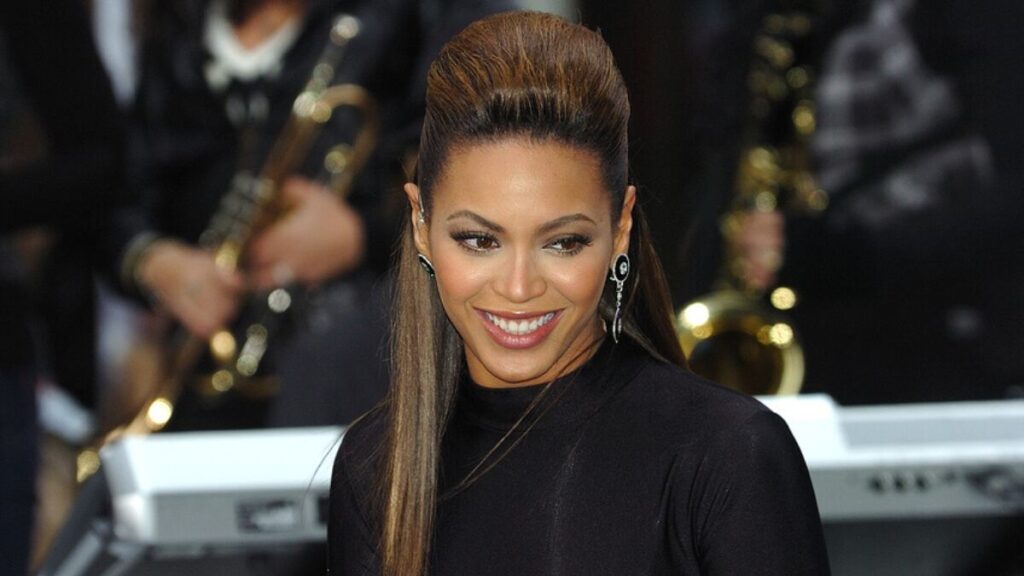
3 Takeaways from Beyoncé’s Business Playbook
- Own your vision and your assets.
- Use scarcity to spark excitement.
- Tell a bigger story that connects beyond the product.
These Beyoncé brand strategy tips show that success isn’t about flooding the market — it’s about creating value with precision, intention, and cultural resonance.
Seeing Beyoncé’s Business Empire Up Close
I’ll never forget walking into downtown Los Angeles the night before the Renaissance show. Entire blocks shimmered with silver outfits, but what struck me most wasn’t just the fashion — it was the sheer scale of Beyoncé’s presence. Billboards for Ivy Park loomed over the streets, and in the arena lobby, fans swapped tour merch like collectibles. It felt less like shopping and more like participating in a ritual.
At one point, I saw a mother and daughter comparing their Ivy Park sneakers, both grinning like they’d scored rare treasures. That’s when it clicked: Beyoncé’s business empire is everywhere, even when the music isn’t playing. The stage may be the entry point, but the world she’s built — clothing, visuals, cultural moments — extends far beyond it.
For me, that night wasn’t just about a concert. It was proof that Beyoncé, the entrepreneur, is just as commanding as Beyoncé, the performer.
What Does Beyoncé’s Future Look Like as a Business Mogul?
Speculating on Beyoncé’s future investments involves examining the patterns she has already established: ownership, cultural capital, and strategic timing. Observers note she may one day rival Rihanna’s Fenty empire in fashion or even Oprah in media influence. After Ivy Park’s transition away from Adidas, it wouldn’t be surprising to see her pivot into luxury fashion with a house of her own — a brand fully under her control.
There’s also chatter about tech and streaming. With Parkwood’s success in film and music production, building a platform that merges content, live experiences, and fan engagement could be her next move. As one industry analyst put it, “Beyoncé doesn’t just enter spaces — she redefines them.”
If the past is any guide, the Beyoncé billionaire future will be less about chasing trends and more about creating new lanes altogether, turning cultural resonance into an enduring legacy.
From Performer to Cultural Architect
Beyoncé’s journey shows that the stage was only ever one piece of the story. With Parkwood Entertainment, she claimed creative autonomy. Through Ivy Park, she blurred the line between fashion and cultural identity. And with BeyGOOD, she anchored her empire in purpose as much as profit. Together, these pillars illustrate a business model built not on volume, but on vision — the kind of empire where artistry and entrepreneurship are inseparable.
What sets her apart is not just the scale of her ventures, but the precision with which she chooses them. Every project feels less like a brand extension and more like a cultural statement. That’s why her legacy as a mogul will never be reduced to balance sheets alone.
In 2025, Beyoncé’s empire isn’t just measured in dollars — it’s measured in cultural resonance. And that, perhaps, is her greatest business triumph.
Nishant Wagh is the founder of The Graval and a seasoned SEO and content strategist with over 15 years of experience. He writes with a focus on digital influence, authority, and long-term search visibility.



